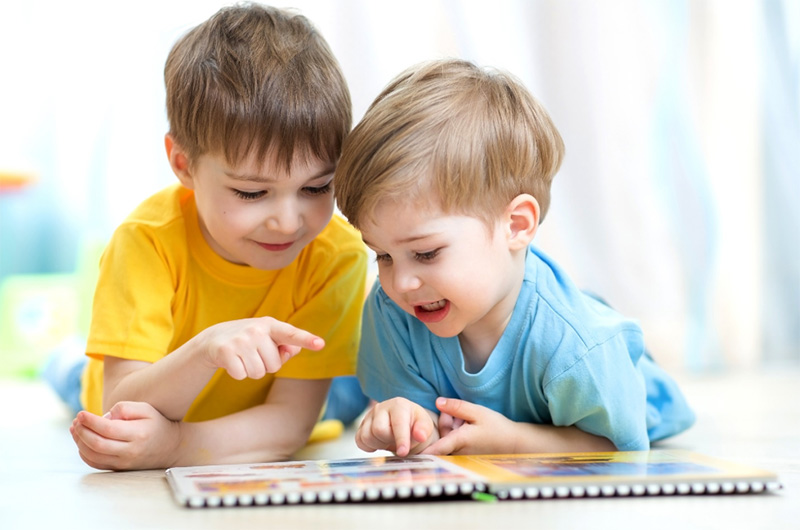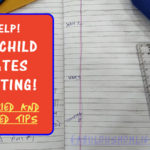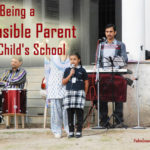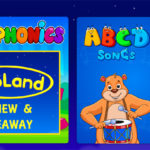Plenty of practical ideas and tips, tried and tested by professionals, to help you make sure that your child learns the essential reading, writing and speaking skills and is not daunted by the prospect of school and studies.

It is my experience that most parents want to help their children with literacy skills, but are not sure of the best way to go about it. Over the years, I have been talking to experts in children’s education for one or the other of my three kids. From toddler to teenager, I have experienced challenges along the way and a lot of advice as well as personal experience has helped. My expert advisers are mainly practicing teachers and people who made it in their lives despite facing learning and comprehension difficulties in early life. Together, the advice from these two helps parents to understand how the schools teach, and what you can do to aid your child with it.
Here is a consolidated plan based on all these tips that I have accumulated, to help you get a better understanding how the learning/education system works and how you can help your child at it.
1. SPEAKING AND LISTENING
1. Talk to your child. Then talk some more. Point things out and ask his/her opinion. Ask what s/he did today, and tell what you did. Talk about things you both like and what s/he dislikes.
2. Never answer for your child if another adult asks him/her a question. Give him every opportunity to communicate with FAMILIAR adults.
3. Ask your child ‘how’ and ‘why’ questions frequently. This is important because it helps to develop his/her imagination, reason and logic.
4. Try not to encourage ‘baby talk’. This can make it very difficult for him/her to express himself or make him/herself understood in unfamiliar situations.
5. Try to develop a time for family conversation and encourage your child to join in, but insist on taking turns and listening carefully to others.
6. Develop your child’s awareness of the differences between formal and informal language and where each is acceptable. For eg, when speaking Hindi or even English, the language we speak at home or with friends is not what we should use when in school). Remember, style in speaking is formed very early in life.
7. Take time to answer your child’s questions, repeating the information in a different way if they do not understand. If they still do not understand, you have probably not understood what they have been trying to ask. Cover the ground again, more slowly.
8. Play games which encourage speaking and listening. Start a story with a sentence or two, then ask your child to make up the next sentence. Repeat this sequence until the story is finished. This could be your own story or a story that you both know.
9. Describing a person or an object is a good game when your child has to guess who or what it is. Try reversing the roles.
10. Listen and respond games are good fun too. Give your child an instruction eg ‘Go and get something red from your bedroom.’ See how your child responds, then make it a little harder or the instruction a little longer each time.
11. Use talking book and audios of songs and nursery rhymes to develop listening skills. Encourage him/her to use the DVD player or any app that you are using on a tablet independently after listening to your instructions.
12. Use old newspapers and magazines and ask your child to find- “A picture of something you like to eat.” “Something very small.”
13. Choose an old favourite, or familiar story. Tell your child that this time you are going to make a few changes. See if s/he can spot them. Make the changes obvious to begin with, but later, more subtle.
14. Developing his/her concentration and attention as this is the gateway to memory.
15. Play games such as asking your child to remind you to do something at home time or after lunch etc.
16. Suggest a message to give to dad when he gets home. Rehearse it and challenge each other to remember it from time to time during the day.
2. BOOKS AND STORIES
17. Make full use of your local library or exchange books with friends to introduce your child to a wide variety of books.
18. Ask the librarian for help and advice to locate the latest books and the old favourites.
19. Don’t forget to look at the non-fiction books. Your child might like a book about his/her specific interest – animals, tractors, aeroplanes, dinosaurs, football.
20. Share stories both new and familiar, encouraging your child to join in the repetitive or rhyming sections.
21. Ask him/her to predict what is going to happen on the next page. When you have talked about it, turn over and see if s/he was correct.
22. Teach your child to read the illustrations and discover that there are often ‘secrets’ embedded in the picture, that are not mentioned in the text, that enhance the story. E.g. Lift the Flap Books, Pop up books etc.
23. Ask your child to add to this story from what s/he can see in the pictures.
24. Pretend you are one of the other characters in the story and retell the story from its point of view.
25. Recording your story telling can be fun. It can also help your child to organise and reorganise his/her thoughts.
26. Try to make others stories on a similar theme, creating more adventures for the characters and even introducing new ones.
27. Use picture books without words to make up your own story. Write the story down so s/he can see the words in print. (Writing the story on your computer is an excellent idea.)
28. Begin to use the correct terms when describing a book and the printed story, eg book, cover, beginning, end, page, line, word, letter, title, author, illustrator, characters.
29. Don’t underestimate your child in this area, they may even begin to ask you how a book is made. So be prepared.
30. Make your child aware that words that are written down remain the same and can be read again. Try making your own books with the stories you have written on the computer and your child’s own illustrations.
31. Begin to track the text in the right order whilst you are reading to him/her, page by page, left to right, top to bottom. Encourage him/her to follow your finger with his/her own.
32. Gradually let him/her take over pointing while reading (or telling the story) making sure that one spoken word corresponds to one written word.
33. Try some games as s/he gains more confidence e.g.
Show me the front/back of the book.
Where do we start reading?
Where do we go after the end of the first line?
Can you turn the page?
34. Remember, books should always be fun. Once a child loses interest or concentration, put the book away.
35. Don’t ever make reading a chore or s/he will learn to hate books instead of love them. As a rough guide, 15-20 minutes is enough, but this may vary from child to child.
36. Show him that reading is important to you too. Establish a quiet time during the day when you each read independently.
37. Insist on handling books with care, starting at the beginning and turning the pages correctly.
38. Make book care special by providing a shelf or special box for storage. Never put books in the toy box with the rest of his/her toys.
3. ALPHABET AND LETTER RECOGNITION
39. Introduce your child to the fun of rhyming through familiar nursery rhymes and simple poems. Repeat the rhymes or poem for your child, allowing him/her supply the rhyming words from memory.
40. Extend this game to think of new words to rhyme with those in the poem. Eg When saying ‘Jack and Jill’, you could think of many other words which rhyme with hill.
41. Don’t worry if some of these are nonsense words, its all part of the fun and its getting the idea over. Sometimes its fun to create only nonsense words. Try reading some nonsense poems too.
42. Begin to recite the alphabet. It’s better to say it rather than sing it. Some tunes go too quickly over certain letters and your child could get confused.
43. Buy or borrow some of the many wonderful books and games or use educational mobile apps that are now available to help you. Remember always to make it as much fun as possible.
44. Once s/he becomes proficient, begin to play games, e.g
Which letter comes after “s”?
Which letter comes before “h”?
45. Call each letter by its name, then introduce its sound. Please be careful here and check your school’s specific approach so that you will not confuse your child.
46. Talk about capital and lower case letters and begin the process of putting a name to a written letter.
47. Play games to encourage him/her to identify an initial sound. “I Spy” is an old favourite and you will find many adaptations of this in books and toyshop games.
48. Watch carefully for the time when your child shows an interest in writing these letter. It is important that s/he learns to form them correctly from the beginning and so avoid problems later on.
49. Encourage your child to recognise his/her own name written in a variety of place. Eg on birthday cards, on name tags in his school clothes etc.
50. Look for the letters s/he knows in other place whilst out shopping, walking down the high street, in a café or restaurant.
51. Encourage the awareness that words are written for a variety of purposes. Eg birthday cards, shopping lists, shop signs, menus etc.
52. Show him/her that words are made up of lots of letters. Consolidate this when reading books by saying:
‘Show me a letter’.
‘Find me another letter just the same’.
‘Show me a word.’
‘Can you point to a space between two words?’
‘How many letters make this word?’
53. Point out the places where capital letters occur eg at the beginning of a sentence or at the beginning of his/her name. Show him that sometimes words are written with all capitals eg shop signs and food packets.
4. WORD RECOGNITION AND SPELLING
54. Encourage your child to recognise on sight a range of familiar words, including his/her name and family names, captions, labels and words from favourite books, shop signs and words from food packets.
55. Introduce gradually, the 46 high frequency words that your child will be expected to read by the end of the first year. (See list at end of the post.)
56. Write these words on cards as s/he learns them and encourage him/her to include some of these words when writing simple stories.
57. Make a simple story for him/her with one of these words missing. See if s/he can select the correct word from his/her pack.
58. Use some of these words and make a nonsense story. See if s/he can rearrange them in the correct order.
59. Be inventive, between you, you can invent a multitude of games and activities in this area that will strengthen his/her learning.
60. Look at commercially produced games and computer programmes. These will give you lots more options to widen his/her horizons.
61. Make your own “Word Search” games on your computer using the words s/he has begun to recognize. Let him/her type some of the letters in, this will be wonderful keyboard practice.
62. When s/he can recognize most of the high frequency words from the list, try learning to spell them one at a time. Encourage your child to say the letters in the word and then write them down.
63. Try to create a balance with regard to spelling. If you are too fussy, your child will think that correctness is all that matters and pleasure and creativity are forgotten. To little fuss and a child concludes that spelling is irrelevant.
5. VOCABULARY EXTENSION
64. Add new words to your list from areas of specific interest or linked to a particular topic such as birthdays, holidays, Diwali, Christmas, a Vacation etc. Like Firecrackers, Lamps, Beach, Mountain, Flight, Railway Station, Pine Tree etc.
65. Add to his/her oral vocabulary from your shared reading or general observation of the world around you. Children have no problem in remembering words which you might consider difficult.
6. HANDWRITING
66. Try to encourage a firm, comfortable and efficient pencil grip from the first occasions that your child picks up a pencil.
67. Give him/her plenty of opportunity to draw in the early stages so that s/he feels at ease with and in control of the pencil, pen, crayon or felt tip.
68. Buy books for tracing, colouring in pictures or dot to dot puzzles. These all help to develop confidence and control.
69. Practice tracing over letters always starting in the correct place. Your school should be able to provide you with a copy of the type of script they use.
70. Try to make sure s/he used the correct sequence of movements when writing the letters independently. This will ensure that there is no halt in his/her progress later on when s/he begins to join up the letters.
7. READING WITH UNDERSTANDING
71. Remember and use the same story reading skill that were discussed at the beginning of this booklet, when your child brings his/her reading book home from school.
72. Don’t just expect him/her to read the words as this takes most of the interest and enjoyment out of the book.
73. Look through the book, looking at the pictures only. Then discuss the probable story line. You can guide your child in this discussion by glancing at the text yourself.
74. Go back to the beginning and use the picture clues, knowledge of the story and initial letter sound to decode any new vocabulary occurring in the story.
75. Help him/her to begin to notice the difference between spoken and written words, through re-telling favourite stories. Compare the “told” version with what the book “says”.
76. Begin to make him/her aware of traditional storybook language such as, ‘Once upon a time…..’, ‘Once there was…..’, ‘She lived in a little….’,’he replied…..’. Encourage him/her to use these phrases when re-telling a story.
77. Re-reading familiar story text builds confidence, consolidates learning and enhances enjoyment. Never tell your child that a book is to ‘easy’ for him/her.
78. Encourage him/her to use his/her knowledge of familiar stories to re-tell them to other people, recounting the main points of the story in the correct sequence.
79. Help him/her to become familiar with his/her favourite books so that s/he can locate and read important parts of the story. Eg picture captions, the names of key characters, rhymes and chants ( ‘I’m a Troll…..’ ‘You can’t catch me I’m the Gingerbread Man….’)
80. Point out story structures, eg characters, actions/reactions, consequences and the ways stories are built up and concluded.
81. Try to introduce your child to different kinds of texts as early as possible eg information books, magazines, newspapers and comics.
82. Show them that different kinds of texts are read in different ways ie not always from A-Z but selectively depending on interest.
83. Use information books to play search games. Say ‘lets find out something we didn’t know before.’
84. Answering children’s constant questions can be difficult. You can use this as an opportunity to introduce information books.
85. Always start with a question that you need to answer. Eg ‘Which was the biggest dinosaur?’ ‘Who build the fastest train?’ ‘ Why do I have to go to bed?’
86. Reading recipes and following the instructions in the words and pictures can be fun. Your child will be able to use this experience to develop their skills in reason and logic when writing their own instructions.
87. Visit the library and bookshops to discover the richness and variety of information books, which are now being published. Many contain graded text to make them suitable for a wide range of age and ability.
8. WRITING AND COMPOSITION
88. Build on his/her dawning awareness that writing can be used for a range of purposes. Help him/her to ‘write’ a letter to Santa, sign his/her name in a card to Granny, help to make a shopping list and ‘write’ the names of the characters in his/her picture.
89. Save his/her writings and look back over them regularly. This way you can show him/her that writing remains constant ie it will always say the same thing.
90. Gradually with your help s/he should be able to distinguish between writing and drawing in a book of his/her own. S/he should understand that writing is formed a word at a time and that letters are used to spell words.
91. Encourage him/her to suggest which letter you should use to begin the words, when you are writing his/her story or list for him/her
92. Give him/her plenty of opportunities to experiment with writing in a variety of play situations. Eg writing party invitations to his/her toys, being a postman and addressing envelopes.
93. Make sure s/he can write his/her own name, forming and naming the letters correctly. Start with the forename and include the surname as soon as s/he is able.
94. Show him/her how to write labels or captions for pictures and how to put the appropriate words in speech bubbles.
95. Develop this initial skill into composing and writing sentences to match pictures or a sequence of pictures.
96. Progress from this simple stage by letting him/her think about and discuss what s/he intends to write, before s/he begins to write.
97. Help him/her to use a story that s/he knows as a basis for his/her own work. S/he could re-write the story, change the characters or give it a different ending. Read the story of ‘The Big Bad Pig and the Three Little Wolves.’
98. Talk frequently about your child’s favourite characters in stories, films and TV. When children know characters well they have a rich source to draw on for their own writing.
99. Expect his/her written words to make sense ask him/her to check with you. If it doesn’t make sense, see if s/he can tell you why.
100. Play games with words that s/he knows making nonsense sentences then rearranging the words to make sense. This is usually lots of fun especially if you pretend that you can’t put it right.
101. Begin to point out punctuation if s/he has not already asked about it from his/her reading. S/he should begin to be aware of full stops, question marks and speech marks. S/he should also know that names and sentences begin with a capital letter.
REMEMBER your child will learn much faster if you make the activities fun. Play is the most important method of learning for children. Your child’s teacher in Preschool and Primary school will be teaching the same things and you can reinforce the same at home.
CHECK LIST
Keep this checklist with you or pin it on the fridge or a board. This will help you track your success.
HIGH FREQUENCY WORDS FOR SIGHT RECOGNITION
Most children will be expected to sight read these words by the end of the first year.
I
up
here
look
we
like
and
on
at
for
he
is
said
go
you
are
this
going
they
away
play
a
am
cat
to
help
come
day
the
dog
big
my
mum
no
dad
all
in
went
was
of
me
she
it
you
yes
can
WHAT CAN YOU DO?
Here is a checklist for your child.
I can listen carefully.
I can ask questions
I can answer questions.
I can join in conversation.
I can listen to stories and tapes.
I can remember messages.
I can join in with my favourite story.
I can retell a story
I look after my books.
I can hold my book and turn the pages.
I can point to letters and words.
I like to visit the library.
I can choose my own book.
I can find information in a book.
I can recite the alphabet.
I can recognise the letters of the alphabet.
I can write the letters of he alphabet.
I can recognise my name.
I can write my name.
I can recognise letters on food packets.
I can recognise words when out shopping.
I can find a rhyming word.
I can hold my pencil firmly.
I can draw pictures.
I can make a nonsense story.
I can rearrange a nonsense story.
I can write my own story.
I can spell some words.
I can play ‘I Spy’.
I can say words which begin with the same sound.
I can follow instructions.
I can give clear instructions.




Wonderful.. all r superb points… some im relating to the present. N some for my new bundle of joy.
That’s true….while most are for younger children, some tips can help elder ones too 🙂
Post kaafi badi hai oer uska ek ek word itna interesting n useful hai ki maine bahut dhyan se usko khub samjh kar read kiya ki haan ye kaise kar paayengey
Baccho ki pehli teacher ma n school ghar hota hai, wahi se accha seekh kar, sab baato ko dhyan me rakh kar hi uska improvement har kadam per hoga
Bilkul sahi kaha aapne….pehli teacher to maa hi hoti hai. And if moms understand how teachers teach, together they can do wonders.
I always find your blog so informational and helpful
I have noted down many of these tips and will be sharing them with my sis
Very interesting and helpfull post ..tips are really amazing
This is a huge blog post. Thank you so much Lata for collectively summarizing all important things.very informative. I shall share it too for my known mommies too..